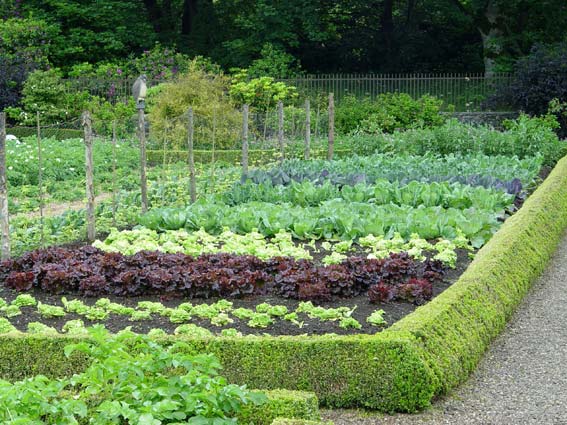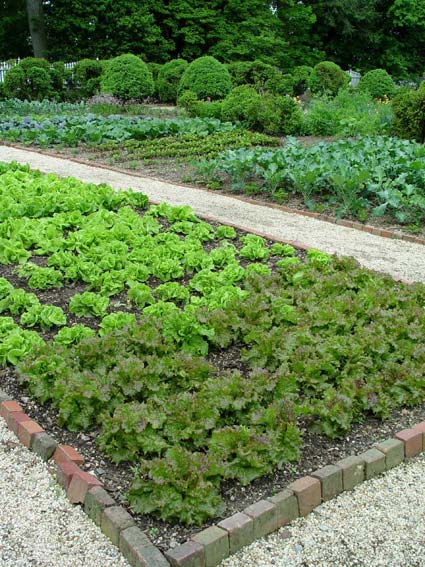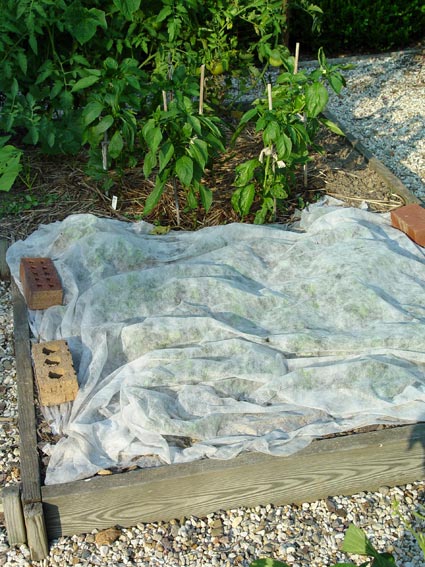6 Easy to Grow Veggies for First Time Gardeners
Thinking of starting a vegetable garden, this is your sign to go for it! Not sure what to plant to be successful? Read here to find 6 easy to grow veggies.

© George Weigel
Although growing your own veggies is not too terribly difficult, there’s more to it than just scratching some seeds in the ground and hoping they’ll germinate. As in any endeavor, the more you know about how to grow vegetables, the more successful you’re likely to be.
Most vegetables grow best in full-sun– especially fruit-bearing crops such as tomatoes, peppers, cucumbers, and melons. Pick a spot that gets at least 8 hours of direct sun daily. Stay far away from trees; a dense leaf canopy casts too much shade, and thirsty tree roots quickly grow into veggie-garden soil and out-compete your crops. Tree roots often spread at least twice as far out beyond the canopy.

© George Weigel
Few gardeners are blessed with such good soil that they can just dig and plant. Some soil is clayish, causing poor drainage and difficult root growth. Some soil is sandy, which dries almost as fast as you water it. And some soil is just nutritionally poor, or too acidic or alkaline for optimal growth. Test the soil to see what fertilizer, lime, sulfur or other products are needed to improve it suitably for vegetables. Most garden centers and county Cooperative Extension offices do soil tests or offer inexpensive, do-it-yourself soil test kits. Additionally improve the soil texture of new garden beds by working about 2” of compost, rotted leaves, or similar organic matter into the top 10 or 12 inches of existing soil.
Growing in beds that are 4’ wide, and built up 4" – 6" above grade level ensures good drainage and encourages good root growth. Most people build boxes of stone, blocks, brick, recycled plastic timbers, or rot-resistant wood to contain the soil. Otherwise just mound up the beds without any edging, but this may become messy. If you use organic matter to add extra depth, work it in to improve the soil at the same time. Another advantage of raised beds is that you won’t be walking on the beds. Stay on the paths between the beds and avoid compacting the soil. This virtually eliminates the need for tilling and heavy digging.

© George Weigel
Traditionally vegetable gardens are planted in straight rows with room between to walk. This layout requires season-long hoeing to keep the rows free of weeds. A better idea, especially on a small plot, is to plant in blocks with the same spacing in all directions. Ignore seed packet suggestions that instruct to “…plant beans 3” apart in the row but then 2’ between rows.” The beans will grow just as well 3” apart north and south and 3” apart east and west. Yields will be higher by planting in blocks, and more garden space will be devoted to production and less to unnecessary walking (and hoeing) space.
The fancy names you see on seed packets (‘Big Boy’ tomatoes, ‘County Fair’ cucumbers, ‘King Arthur’ peppers, for example) aren’t just cutesy variations of the same thing. Some varieties perform markedly better than others under differing circumstances. Some are bred or selected primarily for best taste, while others vary in time to harvest, overall yield, or ability to fight off bugs and disease. Select high-quality seeds from name companies such as Park Seed, Burpee, Renee’s Garden, Cook’s Garden, or Botanical Interests among others. Experiment each year until you find the particular varieties that you prefer and that perform best in your garden. Also do homework by asking veteran gardeners their favorites or consulting your local county Cooperative Extension office.
Many beginner gardeners think “planting the vegetable garden” is a one-day affair, done right after the threat of frost is gone in spring, earlier in warm winter zones. That’s good timing for season-long warm-weather crops including tomatoes, peppers, eggplant, squash, cucumbers, pumpkins and melons, but it’s too late for crops that prefer cool weather. Vegetables such as peas, onions, lettuce, spinach, cabbage, broccoli, cauliflower, and radishes are best planted in cool weather – including as soon as soil is workable, weeks before the last spring frost in the North. They’ll mature before hot weather turns them bitter or causes them to shut down altogether. In the south these are considered winter crops. Get to know ideal planting times for each crop in your particular area. Typically, Cooperative Extension offices have localized lists. The most productive vegetable gardens have no empty spaces throughout the growing season. Plant throughout the season. Keep young plants of another crop ready to fill the gaps. As one crop is harvested, fill the space with something seasonally appropriate.
Water is the magic ingredient in vegetable gardening. Lack of it causes the intense growth of vegetables to short-circuit, and if the soil gets dry enough result in wilting. The plants may die of thirst or at the least yield will be compromised. Water often enough that the soil is always moist, but not enough that it becomes soggy. Add sufficient water so that the soil is damp to the root zone. Check with a pencil or stick to determine how deep the water has gone. Repeat watering if it remains dry at the base. Watering may be required every day or two in hot, dry weather. Raised beds dry out faster than in-ground plantings.
Weeds compete for nutrients and moisture in the garden. Yank them as soon as any emerge and definitely before they go to seed. Better yet, put down a light layer of mulch of chopped leaves or straw between plants to suppress weeds and conserve moisture. In addition, discourage weeds by applying granular Preen Natural Vegetable Garden Weed Preventer every 4 weeks around established plantings.

© George Weigel
Assorted bugs and diseases target different vegetables, lessening yield or rendering them inedible. The most effective pest strategy is to select seeds or plants of natural bug and disease-resistant varieties in the first place, so do your homework. Keep plants as healthy as possible by supplying good soil, adequate moisture, and nutrition to maximize plant immune systems. Strong, healthy plants fight off bug and disease pressure readily. Monitor regularly for early signs of trouble, but don’t just spray the whole garden at the first sign of something crawling. Research the damage to determine what’s causing it and determine if it’s just temporary and cosmetic, or a true health threat. All sorts of remedies are available if action is needed, including mechanical bug barriers such as floating row covers (installed at planting time), mint-scented repellents, and “soft” (non-toxic) sprays such as oils and soaps.
Assorted animals (especially deer, rabbits, groundhogs, and voles) love vegetables as much as people do. Plan to fence the garden right off the bat. To stop both climbing and burrowing pests, sink a 6-inch board completely around the perimeter, then erect a 3’-tall, narrow-opening fence, left unsecured at the top (so groundhogs lack support to climb over). Taller fencing – 8’ and up – is needed to stop deer. Motion-activated sprinklers, repellents, and other scare tactics may prove effective.
Following these basic but significant suggestions and you will be able to improve your diet with healthy veggies all season long.